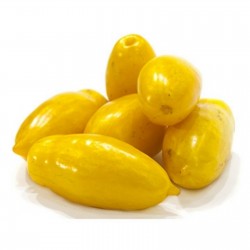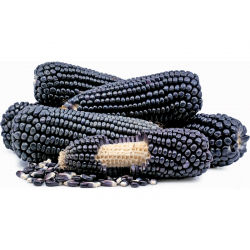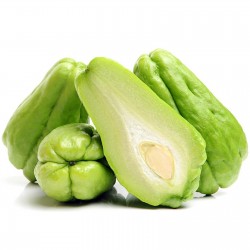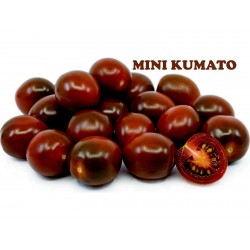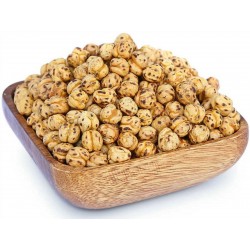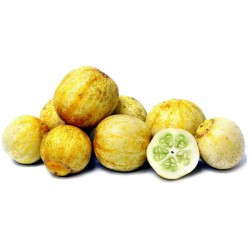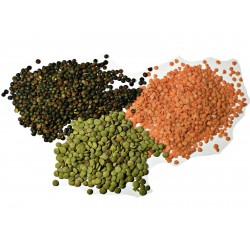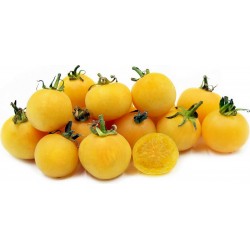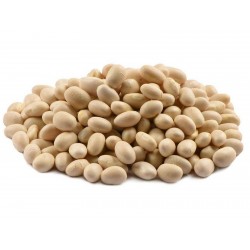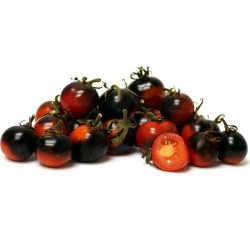Seeds Gallery Com,
5/
5
<meta http-equiv="Content-Type" content="text/html; charset=UTF-8" />
<h2><strong>Chayote tohumları (Sechium edule)</strong></h2>
<h2><span style="color: #ff0000;"><strong>1 tohum Paketi için fiyat.</strong></span></h2>
<p>Chayote (Sechium edule), aynı zamanda christophene veya christophine, cho-cho, mirliton veya merleton (Creole / Cajun), chuchu (Brezilya), Cidra (Antioquia, Caldas, Quindio ve Risaralda bölgeleri), Guatila (Boyacá ve Valle) del Cauca bölgeleri), Centinarja (Malta), pimpinela (Madeira), Pipinola (Hawaii), armut kabak, sebze armut, chouchoute, choko, güisquil (El Salvador), Labu Siam (Endonezya), Squash, Ishkus veya Chowchow ( Hindistan), బెంగళూరు వంకాయ (తెలుగు - Telugu), Pataste (Honduras), Tayota (Dominik Cumhuriyeti), Sayote (Filipinler) [5], kabak ailesi Cucurbitaceae'ye ait kavun, salatalık ve kabak ile birlikte yenilebilir bir bitkidir.</p>
<p>Chayote aslında bolca büyüdüğü ve ticari değeri az olduğu Meksika'ya özgüdür. Latin Amerika'nın her yerinde ve dünya çapında bir ürün olarak tanıtıldı. Başlıca büyüyen bölgeler Brezilya, Kosta Rika ve Meksika Veracruz'dur. Kosta Rika chayotes ağırlıklı olarak Avrupa Birliği'ne ihraç edilirken, Veracruz ABD'ye ana chayotes ihracatçısıdır.</p>
<p>Chayote kelimesi Nahuatl chayohtli kelimesinin İspanyolca bir türevidir (telaffuz / t͡ʃaˈjoʔt͡ɬi /). Chayote, geniş bir botanik örneği yelpazesini geri getiren erken kaşifler tarafından Avrupa'ya tanıtılan birçok gıdadan biriydi. Fetih Çağı aynı zamanda bitkiyi Meksika'dan güneye yayarak diğer birçok Latin Amerika ülkesinin mutfağına entegre olmasına neden oldu.</p>
<p>Chayote meyvesi çoğunlukla pişmiş formlarda kullanılır. Pişirildiğinde, chayote genellikle yaz kabağı gibi işlenir, genellikle gevrek lezzeti korumak için hafifçe pişirilir [açıklama gerekli]. Nadir olsa da ve özellikle dokuda özellikle tatsız ve sert olduğu düşünülse de, çoğunlukla limon veya limon suyu ile marine edilmiş salatalara veya salsaslara çiğ chayote eklenebilir. Çiğ veya pişmiş olsun, chayote iyi bir amino asit ve C vitamini kaynağıdır.</p>
<p>Çoğu insan sadece meyvenin yenilebilir olarak bilinmesine rağmen, kök, kök, tohumlar ve yapraklar da yenilebilir. Bitkinin yumruları patates ve diğer kök sebzeler gibi yenilir, sürgünler ve yapraklar genellikle salatalarda ve kızartmalarda, özellikle Asya'da tüketilir. Kabak ailesinin salatalık, kavun ve kabak gibi diğer üyeleri gibi, chayote'un yayılan bir alışkanlığı vardır ve sadece bahçede bol miktarda yer varsa ekilmelidir. Kökler, özellikle kaplarda çürümeye karşı oldukça hassastır ve bitki genel olarak büyümek için titizdir. Bununla birlikte, Avustralya ve Yeni Zelanda'da, bir tavuk teli desteğine yerleştirilen veya bir çitin gergin olduğu kolayca yetiştirilen bir avlu veya bahçe bitkisidir.</p>
<p>Açıklama</p>
<p>En yaygın çeşitte, meyve kabaca armut şeklinde, biraz düzleştirilmiş ve 10 ila 20 cm uzunluğunda kaba kırışıklıklar içerir. Yeşil armut gibi görünüyor ve yeşilden beyaz ete kaynaşmış ince, yeşil bir cilde ve tek, büyük, düzleştirilmiş bir çukura sahiptir. Bazı çeşitlerin dikenli meyveleri vardır. Eti oldukça yumuşak bir tada sahiptir ve bir doku bir patates ve bir salatalık arasında bir haç olarak tanımlanır. Genel olarak atılmasına rağmen, tohumun fıstıklı bir aroması vardır (alıntı gerekir) ve meyvenin bir parçası olarak yenebilir.</p>
<p>Chayote asma zeminde yetiştirilebilir, ancak bir tırmanma tesisi olarak, herhangi bir şeye dönüşür ve destek sağlandığında kolayca 12 metreye kadar yükselebilir. Kalp şeklinde yaprakları, 10-25 cm genişliğinde ve gövdesinde dalları vardır. Bitki kümeler ve yalnız dişi çiçekler erkek çiçekler taşımaktadır. Bitkinin meyvesi açık yeşildir ve uzunlamasına derin sırtlar ile uzar.</p>
<p>Taksonomi</p>
<p>Bitki ilk olarak modern botanikçiler tarafından P. Browne'un 1756 tarihli eseri, Jamaika'nın Sivil ve Doğal Tarihi'nde kaydedildi. 1763 yılında Jacquin tarafından Sicyos edulis ve Adanson tarafından Chocho edulis olarak sınıflandırıldı. Swartz, 1800 yılında mevcut Sechium cinsine dahil etti.</p>
<p>Mutfak ve tıbbi kullanımlar</p>
<p>Meyvelerin dilimlenmesi veya pişirilmesi için soyulmasına gerek yoktur. Çoğu kişi bunu kendi başına çok hafif bir lezzet olarak görür (bazıları hoş olmayan bulsa da). Genellikle baharatlarla (örneğin Avustralya'da tuz, tereyağı ve biber) veya diğer sebzeler ve / veya tatlandırıcılar içeren bir tabakta servis edilir. Ayrıca haşlanmış, doldurulmuş, ezilmiş, pişmiş, kızartılmış veya escabeche sosunda turşu yapılabilir. Hem meyve hem de tohum amino asitler ve C vitamini bakımından zengindir. [8] Taze yeşil meyveler serttir ve kahverengi lekeler veya filizlenme belirtileri yoktur. Küçük olanlar daha hassastır.</p>
<p>Kökün yumrulu kısmı nişastalı ve bir patates gibi yenir (kızartılabilir). Domuz veya sığır yemi olarak da kullanılabilir.</p>
<p>Yapraklar ve meyveler idrar söktürücü, kardiyovasküler ve antienflamatuar özelliklere sahiptir ve yapraklardan yapılan bir çay arteriyoskleroz ve hipertansiyon tedavisinde ve böbrek taşlarını çözmek için kullanılmıştır.</p>
<p>Louisiana Creole ve Cajun mutfağında, mirliton (IPA olarak telaffuz edilir: [ˈmɜːlɪtɒn]) olarak bilinen meyve ayrıca mirletons veya merletons (çoğul — r genellikle sessizdir, örneğin Cajun me-lay-taw veya kentsel Creole miʁl-uh-tɔ̃ns) ) çeşitli tariflerde, özellikle Şükran günü, tatil için popüler bir mevsim yemeğidir.</p>
<p>Chayote, Mesoamerica'daki geleneksel diyetlerin önemli bir parçasıdır ve çeşitli yemeklerde bulunabilir.</p>
<p>Filipinler'de, bitki "Sayote" olarak bilinir ve çoğunlukla ülkenin Benguet gibi dağlık bölgelerinde ve Cordillera İdari Bölgesi'nin bazı bölgelerinde yetiştirilir. Chayote, çorba, tavada kızartılmış sebzeler ve doğrama gibi birçok yemekte kullanılır.</p>
<p>Endonezya'da, chayotes labu siam olarak adlandırılır ve sürgünleri ve meyveleri için yaygın olarak ekilir. Genellikle Sundan yemeklerinde "lalap" ve Sundan mutfağının "sayur asem" adı verilen malzemelerden biri olarak kullanılır.</p>
<p>Tayvan'da, chayotes, lóng xü cài (龍鬚 菜, kelimenin tam anlamıyla "ejderha bıyık sebze") olarak bilinen çekimleri için yaygın olarak ekilir. Genç yapraklarla birlikte, çekim bölgede yaygın olarak tüketilen bir sebzedir.</p>
<p>Tayland mutfağında, bitki sayongte (Tay dili: ซา ยอง เต้) veya fak maeo (Tay dili: ฟัก แม้ว, kelimenin tam anlamıyla "Miao kavun" anlamına gelir) olarak bilinir. Çoğunlukla kuzey Tayland'ın dağlarında yetişir. Genç sürgünler ve yeşillikler genellikle kızartılmış veya belirli çorbalarda yenir.</p>
<p>Brezilya ve diğer Latin Amerika ülkelerinde, ekmek ve kızartılmış veya salatalarda, çorbalarda ve suflelarda pişirilmiş olarak kullanılır.</p>
<p>Darjeeling, Hindistan ve Nepal'de, bitki ve meyveye muhtemelen kabak kelimesinden türetilen ishkus (Nep Nepalce) denir. Sürgünleri, meyveleri ve kökleri farklı köriler için yaygın olarak kullanılmaktadır.</p>
<p>Chayote, Güney Hindistan mutfağında da popülerdir. Halk arasında Kannada'da "seeme badanekai" - plato brinjal / patlıcan / patlıcan olarak adlandırılan "Bangalore brinjal (Bengaluru vankayya)" olarak anılır. "Sambar" ve "palya" gibi sebze güveçlerinde kullanılır.</p>
<p>Güney Hindistan'daki Tamil Nadu'da "chow chow" olarak bilinir ve "sambar" veya "kootu" için günlük yemek pişirmede yaygın olarak kullanılır. Andhra Pradesh, Bengaluru vankayya denir ve "chow chow" adı altında sebze pazarlarında satılır.</p>
<p>Mauritius yakınlarındaki Hint Okyanusu'ndaki Fransız denizaşırı bölgesi Réunion'da bilindiği gibi chou chou, özellikle dağlık bölgelerde birçok yemekte servis edilmektedir. Chou chou au Gratin'in (peynir sosuyla pişirilmiş) popüler bir başlangıcı, yemekle birlikte ve hatta çöl olarak.</p>
<p>Folklor</p>
<p>"Elmalı turta"</p>
<p>Choko olarak adlandırılan Avustralya'da, kalıcı bir şehir efsanesi, McDonald's'ın elmalı turtalarının elmalar değil, chokoslardan yapılmış olmasıdır. [Bu, McDonald's'ın turtalarında gerçek elmanın kullanıldığı gerçeğini vurgulamasına yol açtı. Bu efsane, konserve armutların genellikle gizlenmiş chokos olduğuna dair daha önceki bir inanca dayanıyordu. Söylenti için olası bir açıklama, Avustralya'da, meyvelerin elmalı turta yapımında daha ileri gitmesi için konserve elmaların kısmen değiştirilmesinde chokos'un kullanılabileceğini öneren bir dizi tarifin olmasıdır. Bu muhtemelen Depresyon Dönemi'nde "sahte" gıda ikameleri ekonomileri, II. Dünya Savaşı'ndan sonraki yıllarda konserve meyve kıtlığı ve elmaların Avustralya'nın birçok tropikal ve subtropikal bölgesinde büyümemeleri ve onları kıt hale getirmeleri nedeniyle ortaya çıktı. Diğer yandan Chokos, Avustralya'da yoğun bir şekilde büyüyor ve çit çizgileri boyunca büyüyen choko üzümleri olan birçok banliyö arka bahçesine sahip.</p>
<p>McDonald's'ın chokos içeren elmalı turtalarının söylentisinin bir başka olası nedeni, elmaların bir McDonald's turtasında dejenere olacağı ve hantal ve yenilmez olacağı düşünülürken, chokos'un pişirildikten, dondurulduktan ve yeniden ısıtıldıktan sonra sıkılıklarını ve kıvamlarını korudukları biliniyordu. Elmalı turta "parçaları" aslında choko parçaları olduğunu ve sos ve doldurma sadece baharatlı, elma aromalı bir karışım olduğu düşünülüyordu.</p>
P





